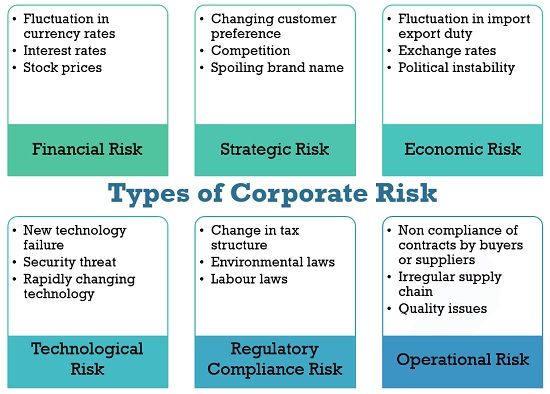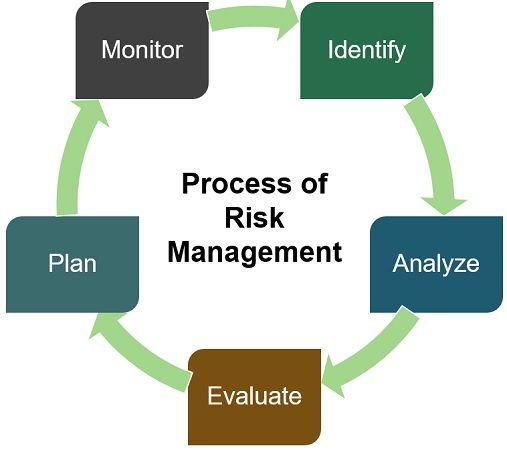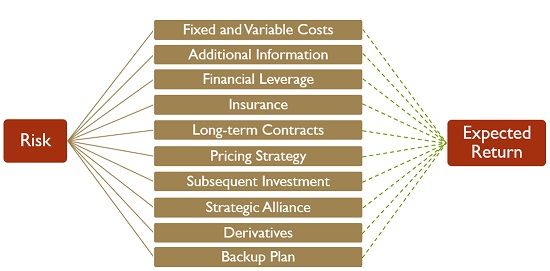Definition: Risk management is the process of optimising the uncertainties and grabbing the opportunities for growth and prosperity of the organisation.
What is Risk?
The possibility of uncertain returns on investment resulting in chances of loss or low profitability is termed as a risk.
Possible return is directly linked with the risk involved. i.e.
High Risk = Possibility of Higher Return
Low Risk = Possibility of Lower Return
Process of Risk Management
- Identify: The manager needs to understand and discover the risk factors involved in the project. Various techniques are used for such identification. A project risk register is maintained to note down the key points.
- Analyse: The risk factors involved in the project are studied, and the possibilities and consequences of the project are recorded in the project risk register.
- Evaluate: In the analysis, the risk factors are rated. The degree of the risk (whether it is bearable or not) is decided on this basis and written in the project risk register.
- Plan: The highest ranked risks are assessed, and proper measures are planned to convert the high risk into bearable risk with the help of risk mitigation strategies. This plan is chalked down in the project risk register.
- Monitor: The effect of the planned strategies on the project is reviewed and inspected, and the loopholes are recorded in the project risk register.
Risk Management is an ongoing cycle.
Ways of Risk Management/Risk Mitigation Strategies
- Pricing Strategy: A new product or service is launched at a lower price to capture the potential market, thus decreasing the risk of product failure.
- Fixed and Variable Costs: Decisions are taken to restructure fixed costs and variable costs to minimise the risk involved with huge investments and operating cost can also be reduced.
- Additional Information: Gathering maximum information about the project regarding the cost involved and its potential return helps in reducing the chances of failure.
- Financial Leverage: If the risk involved in the project is huge, financial leverage or debts or loans must be avoided.
- Insurance: Insurance is essential to reduce the risk of physical or technical damage, theft, etc.
- Long-term Contracts: The Company must enter into long-term contracts with the vendors, clients, employees and financial institutions to ensure regular supply of raw material, revenue generation, and constant production and fix interest rates.
- Subsequent Investment: In case of unpredictable market response, low initial investment is a better option, business expansion can be planned after ensuring a positive market response.
- Strategic Alliance: Collaboration through a partnership or joint venture can be an option for mediating risk if the project cost involved is higher than the investment capacity of the single company.
- Derivatives: Futures or options contracts eliminate the risk of future price change in a volatile market.
- Backup Plan: An alternative plan must be prepared to deal with the adverse situation and outcome.
Limitations of Risk Management
- Risk management involves complex calculations and expertise.
- It requires a lot of research.
- If the plan goes wrong, the loss incurred will be unmanageable.
- It is based on mere interpretations and forecasts.
- It is usually dependant on the external sources of data which may not be reliable.
- It is difficult to implement when it comes to practicality.
Conclusion
The risk is not a negative term. Instead, it can be treated as an opportunity for the company. Corporate risk is inevitable; it can be mediated and managed to generate high returns.




Leave a Reply